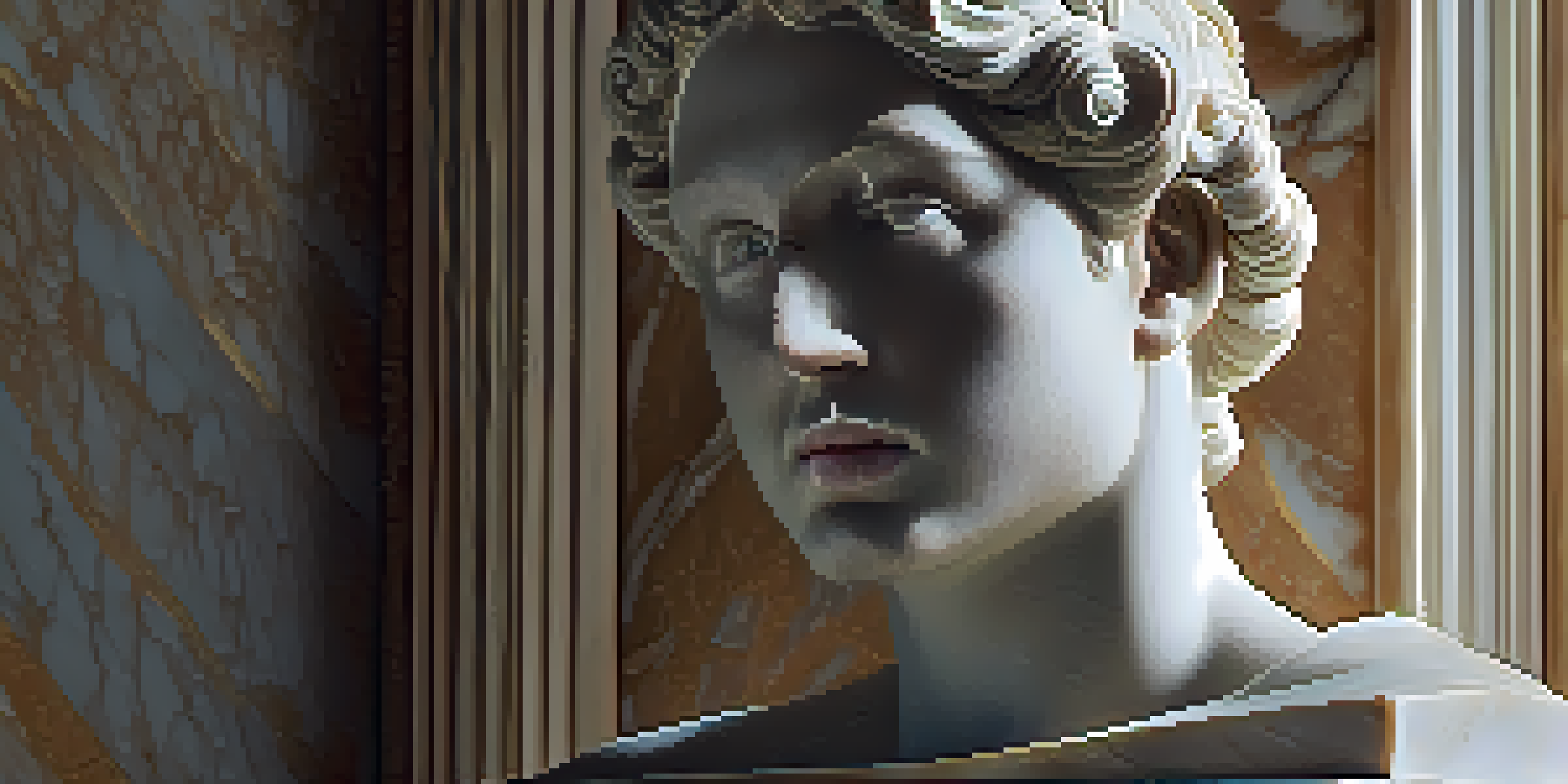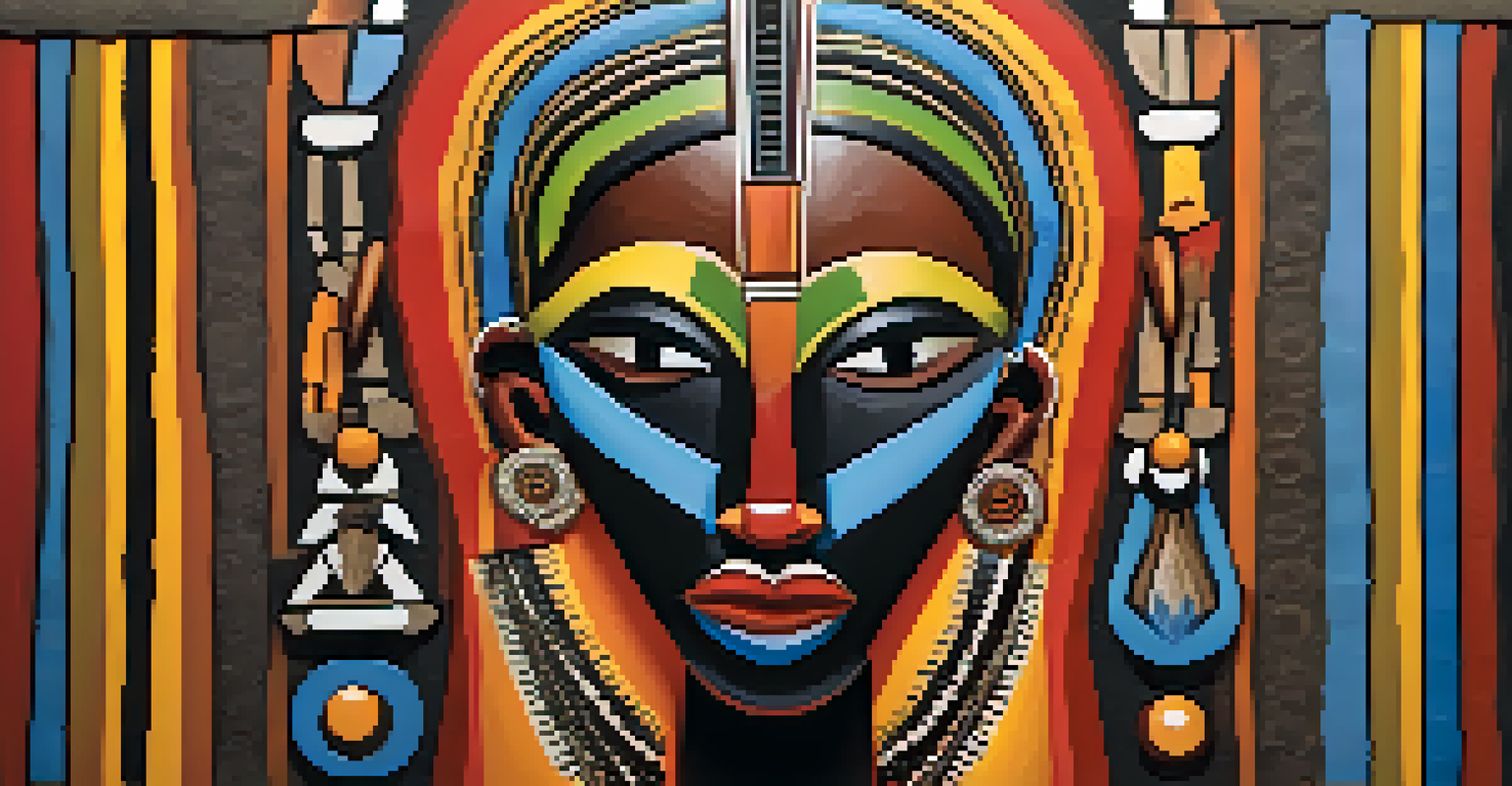The Influence of Art Movements on Carving Techniques

Understanding the Basics: What Are Art Movements?
Art movements are collective styles and philosophies that define a period in art history. They reflect the cultural, social, and political contexts of their time, influencing how artists express their ideas. For instance, movements like Impressionism and Cubism not only changed painting but also impacted various forms of art, including sculpture and carving.
Art is not freedom from discipline, but disciplined freedom.
These movements encourage artists to explore new techniques and materials, pushing the boundaries of traditional art forms. As artists adopt the ideas of their contemporaries, they often adapt their methods to reflect these innovative concepts. This evolution can be seen in how carving has transformed through different artistic lenses over the years.
Ultimately, understanding art movements allows us to appreciate the rich tapestry of artistic expression and its evolution. By examining these movements, we can see how they shape not only visual art but also the techniques employed in carving, leading to new interpretations and styles.
The Renaissance: A Turning Point for Carving Techniques
The Renaissance marked a significant shift in artistic techniques, emphasizing realism and human emotion. This period saw the revival of classical themes and a focus on anatomical precision, which deeply influenced carving. Artists like Michelangelo showcased the human form with stunning detail, inspiring carvers to adopt similar approaches in their work.

Carving during the Renaissance evolved to incorporate more intricate details and lifelike representations. Sculptors began using tools that allowed for finer adjustments, leading to smoother finishes and more expressive forms. The emphasis on perspective and proportion during this time also encouraged carvers to think critically about depth and dimension in their pieces.
Art Movements Shape Carving Techniques
Understanding various art movements enriches our appreciation of carving by illustrating how cultural and historical contexts influence artistic expression.
This period's influence is evident in modern carving as well, where the techniques established during the Renaissance continue to inform artists today. The integration of realism and emotion into carving serves as a foundation for many contemporary practices, showcasing the lasting impact of this pivotal art movement.
Baroque Carving: Drama and Movement in Art
The Baroque period introduced a sense of drama and movement, which significantly influenced carving techniques. Artists sought to evoke emotional responses through dynamic compositions, often incorporating swirling forms and intricate details. This emphasis on theatricality encouraged carvers to experiment with their materials and techniques, resulting in more expressive works.
Every artist dips his brush in his own soul, and paints his own nature into his pictures.
In Baroque carving, the use of light and shadow became essential, with artists employing a technique called chiaroscuro. This technique enhances the three-dimensionality of a piece, creating a sense of depth that draws viewers in. Carvers began to focus not only on the form but also on how light interacted with their creations, leading to a more immersive experience.
The legacy of Baroque carving can still be felt in today’s art world, where many modern artists draw inspiration from its dramatic flair. By understanding the techniques developed during this period, contemporary carvers can create pieces that resonate with the same emotional intensity, bridging the gap between past and present.
The Influence of Modernism on Minimalist Carving
Modernism brought about a radical shift in artistic perspectives, leading to a focus on simplicity and abstraction. This movement influenced carving techniques by encouraging artists to strip away unnecessary details and concentrate on the essence of form. As a result, minimalist carving emerged, showcasing clean lines and understated elegance.
In minimalist carving, the choice of material plays a crucial role in the final product. Artists began to experiment with unconventional materials, challenging traditional ideas of what carving could be. This exploration not only expanded the scope of carving but also allowed for a more innovative expression of ideas.
Technology Transforms Carving Art
Advancements in technology, such as CNC machines and digital design software, are revolutionizing carving techniques, blending traditional craftsmanship with modern innovation.
The impact of Modernism on carving techniques continues to inspire artists today, who often seek to convey complex ideas through simplicity. By embracing minimalism, contemporary carvers can create pieces that provoke thought and reflection, reinforcing the notion that less can indeed be more.
Postmodernism: A Fusion of Techniques and Styles
Postmodernism emerged as a response to the rigid structures of previous art movements, allowing for a blend of styles and techniques. This era encouraged artists to question established norms and explore new possibilities, leading to innovative approaches in carving. Carvers began to draw from a variety of influences, creating eclectic works that defy categorization.
In postmodern carving, the lines between different artistic styles blur, resulting in pieces that incorporate elements from various movements. This fusion allows artists to express complex narratives, often reflecting contemporary social or cultural issues. By mixing techniques, carvers can create multi-layered works that invite viewers to engage with them on different levels.
The freedom of expression found in postmodernism has influenced many contemporary carvers, enabling them to break away from traditional constraints. This movement encourages a playful exploration of form and material, fostering creativity and innovation in the world of carving.
Cultural Influences: Global Perspectives in Carving
Carving techniques are also shaped by cultural influences, with different regions contributing unique styles and approaches. For example, African tribal carvings often emphasize spiritual themes and community stories, using bold shapes and vibrant colors. In contrast, Asian carving traditions may focus on intricate detail and symbolism, showcasing the beliefs and values of their cultures.
These cultural distinctions enrich the practice of carving, creating a diverse tapestry of techniques and styles worldwide. As artists engage with their cultural heritage, they often incorporate traditional methods while also experimenting with contemporary ideas. This blending of old and new can lead to innovative carving techniques that resonate with a global audience.
Cultural Diversity in Carving Styles
Global perspectives contribute to a rich variety of carving styles, as artists blend traditional methods with contemporary ideas to reflect their unique cultural heritages.
Understanding the cultural influences on carving not only enhances our appreciation for the art form but also highlights the interconnectedness of artistic expression. By exploring these diverse perspectives, contemporary carvers can draw inspiration from around the world, creating works that reflect a rich variety of influences.
The Future of Carving: Technology and Innovation
As technology continues to advance, carving techniques are evolving in exciting ways. Tools such as CNC (Computer Numerical Control) machines enable artists to create intricate designs with precision and speed, opening up new possibilities for innovation. This technological integration allows for a blend of traditional craftsmanship and modern efficiency, appealing to a broader audience.
Additionally, digital design software provides carvers with the opportunity to visualize their ideas before execution. This planning phase enhances creativity, allowing artists to experiment with forms and structures that may have been difficult or time-consuming to realize using traditional methods. The result is a new wave of carving that embraces both artistry and technology.

The future of carving is bright, as artists continue to push the boundaries of what’s possible. By embracing technology and innovation, contemporary carvers can create works that reflect the complexities of the modern world while still honoring the rich traditions of the past.